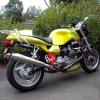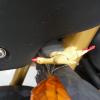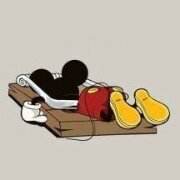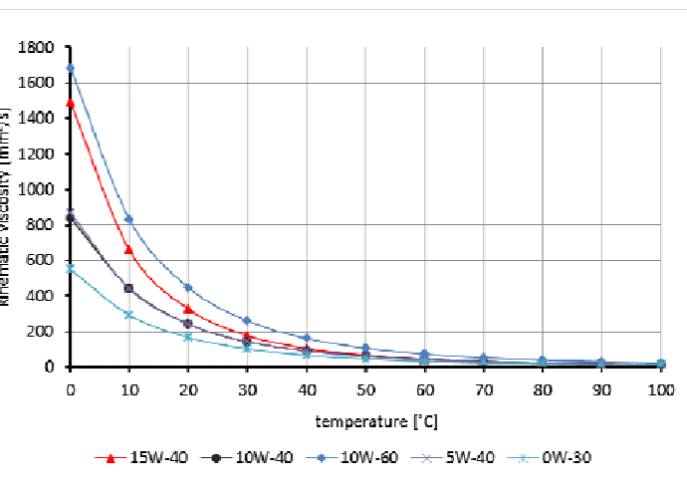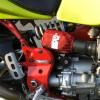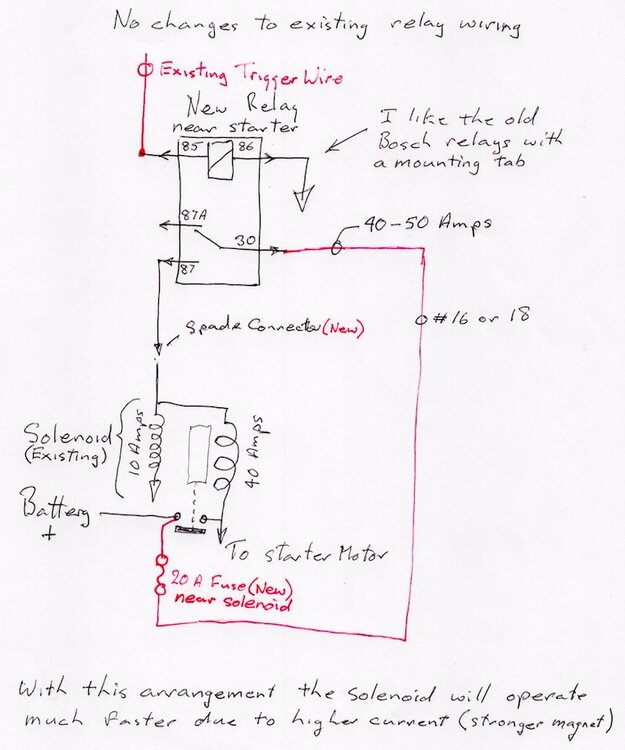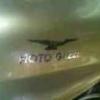Leaderboard
Popular Content
Showing content with the highest reputation on 09/29/2020 in all areas
-
There are different forums for those kind of pictures, but I'm sure you know that already.3 points
-
For those interested in 78 mm crank differences. On the left a Centauro and later Daytona crank. On the right a 78 mm Cali crank. I think the earlier Daytona cranks that used the standard rods also used the Cali version with the balance adjusted but as can be seen the difference between the Cali 78 mm crank and the Centi/Later Daytona cranks is a lot more than just a dynamic balance adjustment. The 78 mm Cali crank is just a heavier version at 8.3 kg compared to 7.5 kg for the Centi and later Daytona Cranks. No wonder the lighter Centi crank and single plate flywheel feels like a Ducati engine. Ciao2 points
-
Ok, listen up. I have them machined and formed. I will *probably* powder coat them tomorrow, or maybe Thursday. If anyone wants a Greenie Green one, let me know. I'm planning on coating some airplane parts with that color and I could add shifter extenders to the batch. Unless you speak up, you get flat black. This ain't the Burger King..2 points
-
I consider the V11 Lemans as the 900SS' fatter freakier sexy cousin. Both bikes are pretty. You'll spend more time gazing the Duc. You'll ride her but she's higher maintenance than the cousin with junk in her trunk who will let you ride her all day. Sorry if the analogy is a little too pornhub but remember we're talking Italian bikes here. 👊😎2 points
-
It's fairly easy for me to reproduce this lettering and upload the vector file in the Fileshare section. If a RM owner can send me a sharp picture, I'll make the file which you can take to the sign maker of your choice.2 points
-
You need to number these things Chuck, after all they are a "limited edition" May be worth a fortune in a hundred years:) Ciao1 point
-
Here's how it works docc if it is indeed the case here. An overfull reservoir leaves no room for fluid expansion so you can sometimes to an extent get away with it until it gets warm/hot. So if the reservoir is overfilled when you pull the lever it will as usual squirt a little fluid back into the reservoir until the secondary seal is exposed to the fluid and the fluid connection hole is covered. The problem is now the reservoir is totally full and when the clutch springs/spring tries to back drive the master the master cant push the fluid back into the reservoir because there is no available room for the displaced fluid to return. Your hand pulling the clutch lever generates more force than the pressure plate springs trying to return the system to the null position so even with the system totally full the hand force can create enough expansion in the reservoir (up to a point) that allows disengagement but then there's not enough force from the pressure plate springs to do the opposite. If you were aware of what was about to occur you would probably have noticed the pull of the lever when the sticking clutch event occurred was harder than normal. The Focus I drive has had similar issues with the clutch for other owners, not I ( pedal sticks to the floor and a hard pedal for the first operation after a freeway drive without using the clutch for a while) and the dealers were replacing clutches and master cylinders and slave cylinders etc only to have the condition re occur. When I investigated my car and another one both reservoirs were way over filled from the factory. They have cast into the reservoir an arrow pointing down with a line above the arrow and the word "full" so everyone fills to the "line" which is in fact over full. When you fill to the arrow tip that's the full level and leaves expansion room. I dont think there's been a single event since i mentioned this on a forum. The natural thought is to "fill to the line" which in this case is wrong. The hard pedal push after a run without clutch use is due to the fluid heating up and expanding. Its a bit like the mal adjusted brake lever freeplay issue. Is this the issue here? don't know but its an easy place to start. Ciao1 point
-
Being trained by dad the pilot, and having a few years' experience in tooling at one of the aircraft builders in Seattle (Ahem!), everything was cleaned beyond shop mechanic's level, visually compared (MG to aftermarket), OEM adjustment screws were swapped over, all fit was checked, and Mobil1 synthetic grease used in assembly. Oddly, it functioned perfectly for several months of local and interstate blasting. The only variable that comes immediately to mind is heat(?) I produced a few extra BTUs in teaching junior a lesson. Since cooling down, the lever feels as before. However, I recall that I am under a Gypsy curse, having failed to give money to some flamboyantly-dressed females along the Autostrada in 1985. Or do those curses have an expiration date? Anyway, after I use one of my surplus (new) syringes to suck some fluid out, I think I'll do the old trick of banding the lever to the bar and letting it sit, with the bars turned so that the M/C and reservoir are the high point.1 point
-
I have added a new oddesy battery, brand brand new starter, five newer relays courtesy of the great “Doc” I have conversed previously with Roy and have to give him a hat tip for all his electrical and mechanical prowess. I’m definitely going to need a visual on what the actual wiring looks like on the bike. I’m very much interested in applying a new relay to my 2004. I am tired of the dreaded click. It used to be that my starter needed a little top with a hammer but now it’s a whole new ball of wax. thank you for the wiring diagram Roy, anyone monitoring this topic have this added relay to their younger v11s? I love to see some actual pictures.1 point
-
I now have a bleed on the slave and a bleed on banjo on the slave. I used an elevate resvoir to feed the system from the slave up, only connecting the master once the line was full.1 point
-
1 point
-
Thanks Phil Here was me labouring under the misapprehension that the temperature viscosity relationship was linear, which it clearly is not From that graph it appears that after 70C and certainly after 80, a temperature approaching normal running condition, that the viscosity changes are pretty much negligable Very interesting1 point
-
1 point
-
Ooooh! Thanks for that. Gonna check, as the diaphragm on the clutch M/C cap was extended when I unscrewed it. Apparently a vacuum seal with the fluid, which was near the top. Will check the level in tomorrow's 75-80º sunshine. Am thinking that all of this is payback for teaching some punk in a VW Golf that he was not the fastest machine on the interstate. Had I been on my GPz500S, ah... I woulda' done the same thing! Coulda' hung with him to about 190 clicks. Crap! I'm 68 years old! What am I thinking???1 point
-
1 point
-
In your climate John your running oil temp even ( not traffic) in summer will probably only be around 100C maximum, probably a fair bit lower. As you can see from the graph below with regards to the change of viscosity from 80 to 100 deg C its very small. It's not a straight viscosity reduction but an exponential change so the difference between 80 and 100 isn't great. The issue you have though isn't going to be at the top end as you wont be needing max oil pressure when the oil temp is up around or over the 100 deg C point, that will be when you're in traffic and even if you did the pressure at 100C will probably now be around the 65 psi mark which is still plenty. Your concern is at the bottom end with the oil light coming on, or has been. Presently you have 32 psi idle pressure at 80 deg C and you wont have the LOP light issue any more even at 120 deg oil temp. From the graph you can get a reasonable idea. I'd estimate the top end at 120 deg C will reduce to around 55 psi and the idle will be around 15-20 psi. plenty in both cases. Of course this doesnt take into account engine clearance changes with temp so it will still be interesting to see what the actual figures are. Ciao1 point
-
Tom, when I drew the Simple Wiring Diagram I was using my 2001 VII Sport, it had a direct feed to the Start Relay, unfortunately a couple of years later the Guzzi factory switched the Start Relay feed to the ignition switch causing untold grief for owners. You can see the difference here. http://www.thisoldtractor.com/guzzi007/schematics/1999_V11_sport.gif 1999 era with a direct feed to the relay. My 2001 never had a problem with cranking but the regulator Voltage reference was the pits (through two sets of relay contacts). http://www.thisoldtractor.com/guzzi007/schematics/2004_V11_Sport_Catalytic.gif 2004 with the start relay fed through the ignition switch, I would like to believe the factory are ignorant of the high current the starter solenoid draws but you have to wonder why they haven't spoken to the manufacturer about it some time in the last 50 years. Note this year has a direct connected Voltage regulator, that' should be a plus. I assume you are having the dreaded click when you press the start button, that is caused by too much Voltage drop through the ignition switch, the starter solenoid is designed to pull at least 40 Amps while it is moving the gear into mesh, once engaged with the main contacts closed it drops to 10 Amps. The Guzzi schematics never show the double coils in the solenoid, they are both about the same number of turn but one is of heavier gauge wire and draws 5 x the current, thats the one missing on the factory drawings. All Guzzi starters have this double coil even today. You can probably improve things for a while by cleaning the ignition switch contacts but the real answer is to change the start relay feed from through the switch to direct but that involves changing the headlight relay wiring as well. Another easy method is to add a new relay to the existing solenoid trigger circuit to boost the signal the trigger wire is removed from the solenoid and now only picks up the new relay coil, a fraction of an Amp, the new relay contact is fed from a new fuse direct from the battery, it can now provide as much current as the solenoid needs. You will probably hear about the MPH solution, I don't think that will work with your bike, it would result in the headlight staying On. I have never actually done one adding an extra relay but it has the advantage in that the original wiring remains the same. The current of 40-50 amps will only last for about 20 milliseconds (as long as it takes to close the main contacts) then it will drop to 10 Amps while cranking. The current through the motor of course will be 150 - 200 Amps, no change there. No need for a relay socket, just use spade lugs right on the relay pins.1 point
-
1 point
-
Absolute top dead center is not critical......Being within 25 degrees or so is fine. Savagehenry's advice is as plain and simple as it can get.1 point
-
I lift the rear wheel, pull the plugs, put trans in 6th gear and turn by hand. I use a straw or wooden dowel in the plug hole to gauge TDC. Also, both pushrods should then spin freely.1 point
-
I wondered how accurate the flywheel is, there are 6 different positions the flywheel can be bolted on, with the trouble owners have finding TDC its highly likely they would bolt it on in one of the other 5, what fun you would have then lol0 points

